CDC’s Pandemic Photographs from 1918
October 9th, 2018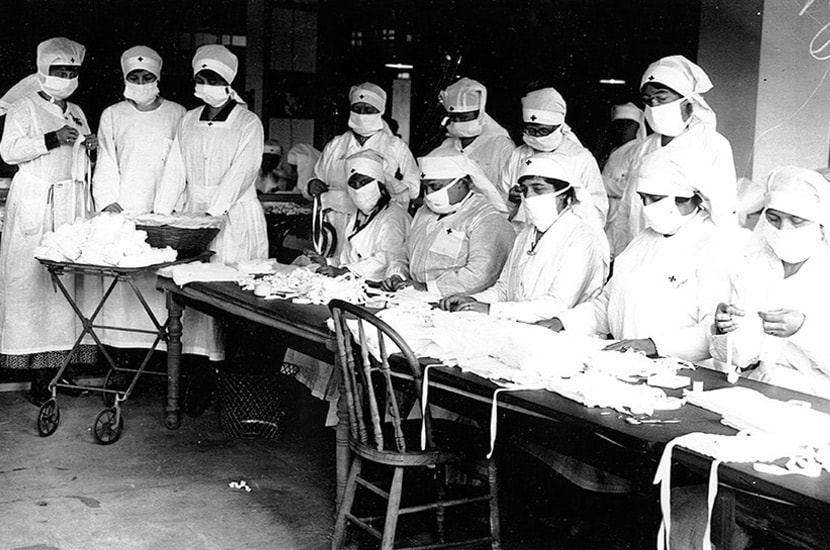
Red Cross Volunteers – Boston, MA
Massachusetts had been drained of physicians and nurses due to calls for military service, and no longer had enough personnel to meet the civilian demand for healthcare during the 1918 flu pandemic. Governor McCall asked every able-bodied person across the state with medical training to offer their aid in fighting the epidemic. Boston Red Cross volunteers assembled gauze influenza masks for use at hard-hit, Camp Devens in Massachusetts.
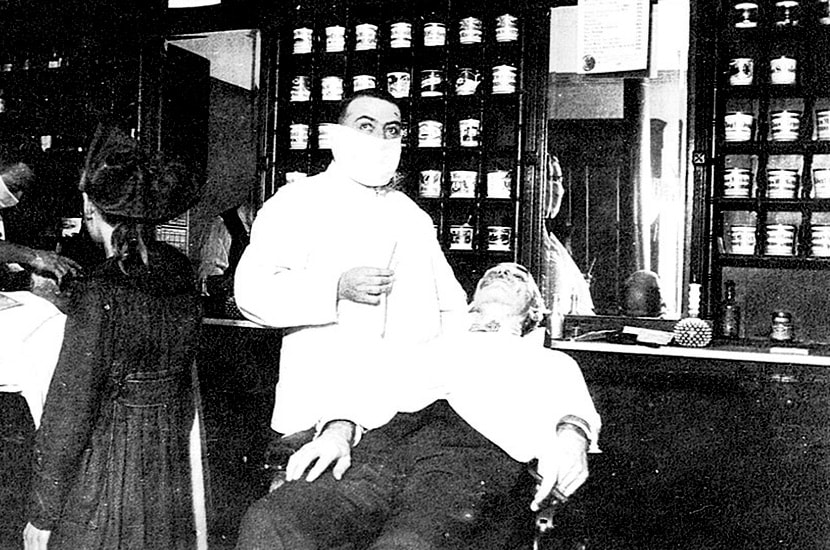
Local Barber – Cincinnati, OHA Cincinnati barber wears a mask while giving a customer a shave. Cincinnati’s barbers and downtown hotel employees were advised to wear a mask to “help in the fight to stamp out influenza”.
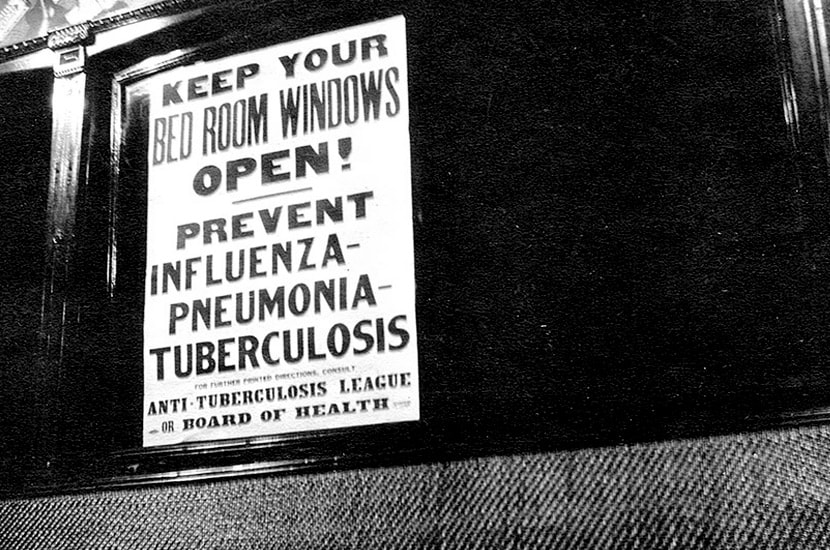
Flu Prevention Streetcar Sign – Cincinnati, OHA Cincinnati Board of Health Streetcar sign during the epidemic, educating passengers on how to prevent influenza, pneumonia, and tuberculosis. Cincinnati’s Health Officer and Mayor were quick to point out that the city was not in the midst of a public health crisis at the time. They told the press that “Cincinnati is endeavoring to prevent an epidemic of Spanish Influenza. There is no epidemic here. We are doing what other cities should have done – we are preventing.”
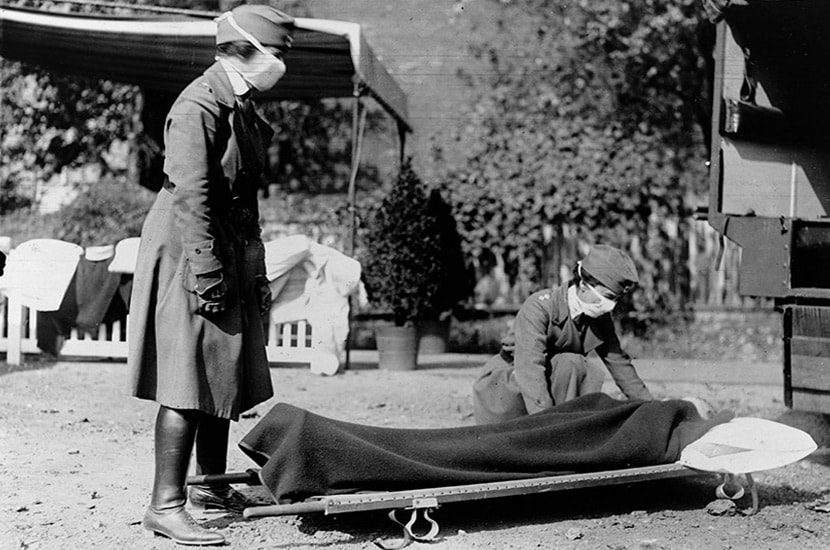
ed Cross Ambulance Demonstration – Washington, DCDemonstration at the Red Cross Emergency Ambulance Station in Washington, DC during the influenza epidemic. As the epidemic grew and total case number rose, the Red Cross put out desperate calls for trained nurses as well as untrained volunteers to help at the emergency centers. In October of 1918, Congress approved a $1 million budget for the U. S. Public Health Service to recruit 1000 medical doctors and over 700 registered nurses. Nurses were scarce at the time.
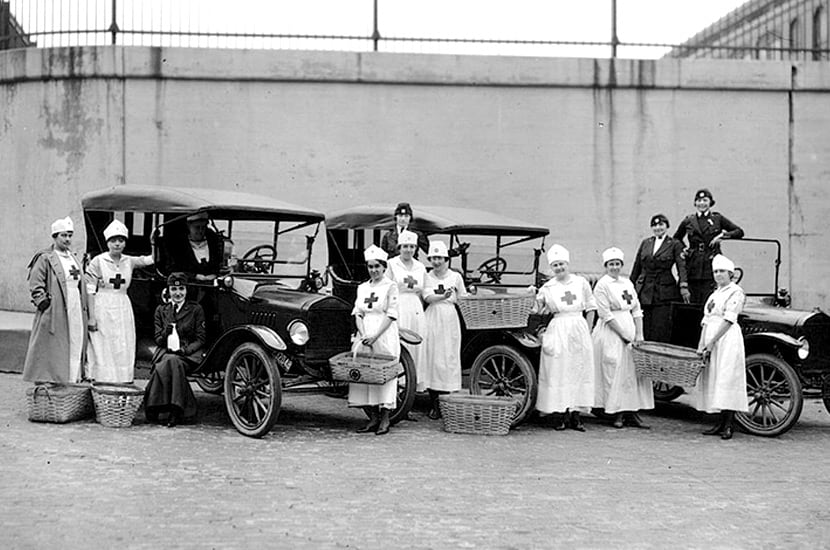
Red Cross Volunteers – Detroit, MIMotor Corps and Canteen volunteers from the Detroit chapter of the American Red Cross, taking a break from delivering supplies to flu victims. To prepare Detroit for what was to come from the pandemic, the Red Cross and Department of Health nurses cooperated together for home visits, food preparation and childcare.
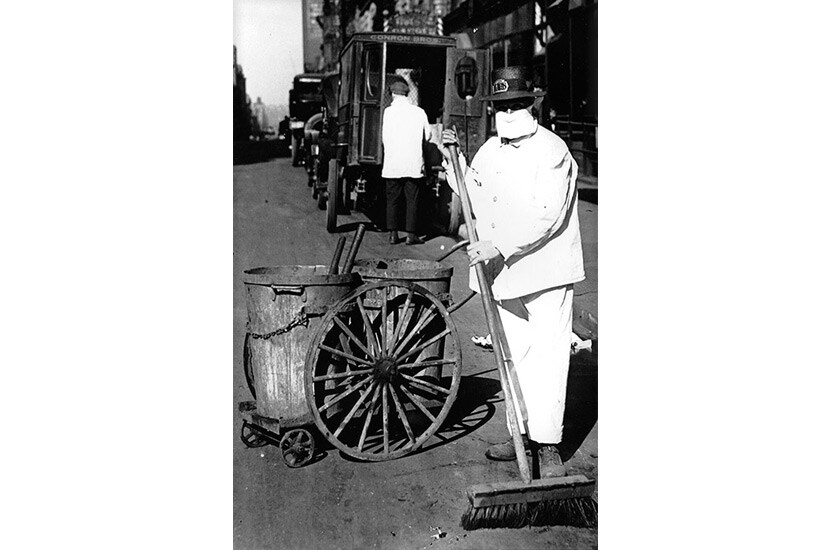
Street Sweeper – New York, NYA New York City street sweeper wears a mask while on the job, October 1918. Street sweepers were also arranged to work as gravediggers to assist with the bodies of influenza victims.
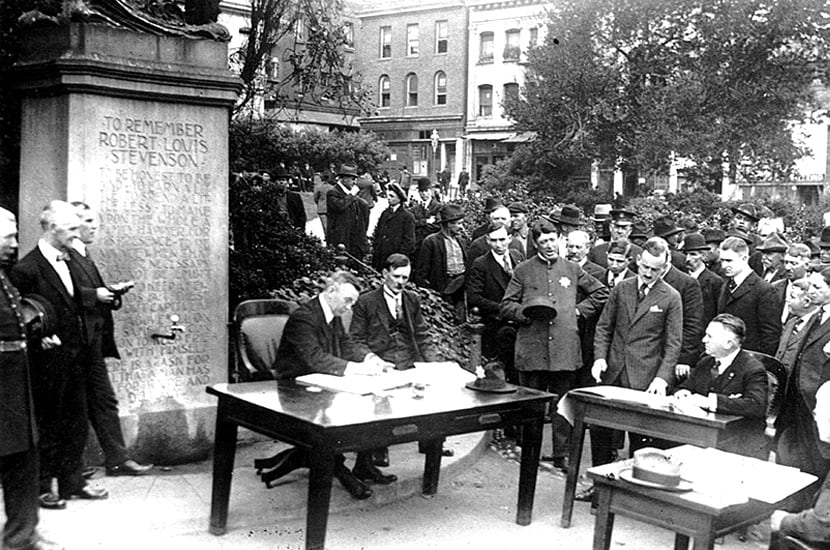
Open-air Police Court – San Francisco, CAAs the number of cases in San Francisco rose sharply, the city Board of Health issued a series of recommendations to the public on how to avoid contracting influenza including avoiding the use of streetcars during rush hour times, avoiding crowds, and paying attention to personal hygiene. To prevent crowding indoors, judges held outdoor court sessions. The Board of Health recommended all services and socials be held in the open air, if they weren’t cancelled.
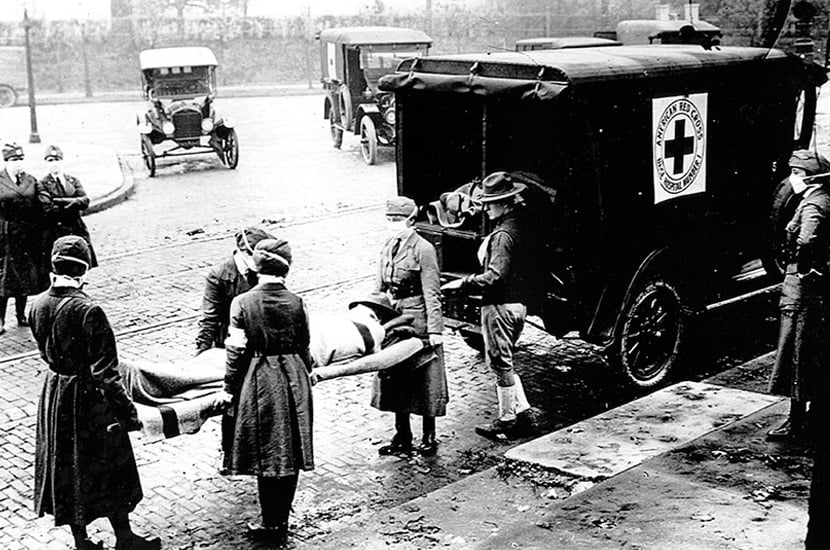
Ambulance Duty – St. Louis, MS
The Motor Corps of St. Louis chapter of the American Red Cross on ambulance duty during the influenza epidemic, October 1918. The Red Cross motor corps recruited volunteer drivers and automobiles to supplement ambulances and chauffeur nurses from one quarantined house to the next. Through this volunteer system, approximately 40 nurses cared for about 3,000 patients who otherwise had no access to private nursing.

